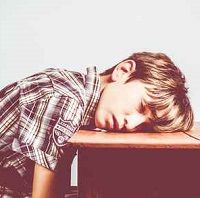Article
Kids with Dravet Syndrome Aren't Getting Enough Sleep
Author(s):
Sleep disorders are common in children with Dravet syndrome, a genetic epileptic encephalopathy. Researchers call for medicating these young patients.

Dravet syndrome, a genetic epileptic encephalopathy affecting children, commonly comes with sleep problems.
Reporting at the American Epilepsy Society 69th Annual Meeting in Philadelphia, PA, Ingrid Scheffer of Austin Hospital, Melbourne, Australia, and colleagues shared the results of a survey of families in which a child had the syndrome. They concluded many of these kids, and their families, need help.
Sleep Disturbance Scale for Children questionnaires were sent to 89 families (91 children) to ask about nocturnal seizures and the use of sleep medications.
Of 50 questionnaires that were completed, 42% showed a sleep disturbance pattern.
The subscores indicated difficulty falling and staying asleep (42%) sleep-wake transition problems (34%) and sleep breathing disorders (30%). But only 36% of the children were getting medication to help them sleep.
Pulse oximetry measures were available for 15 patients and showed 87% had a higher oxygen desaturation index (greater than 3%). Mean pulse rates in sleep were higher than normative for 33% of the children with oximeters.
That could mean "unrecognized nocturnal seizures," the authors said.
They concluded that more could be done for these children, including "more widespread use" of medication.
"Clinical evaluation and appropriate investigation with polysomnography of sleep is required to delineate the cause and initiate appropriate interventions" for these sleep-deprived children. Not only would that make life easier for both the children and their parents, it "has the potential to ameliorate developmental outcome."




